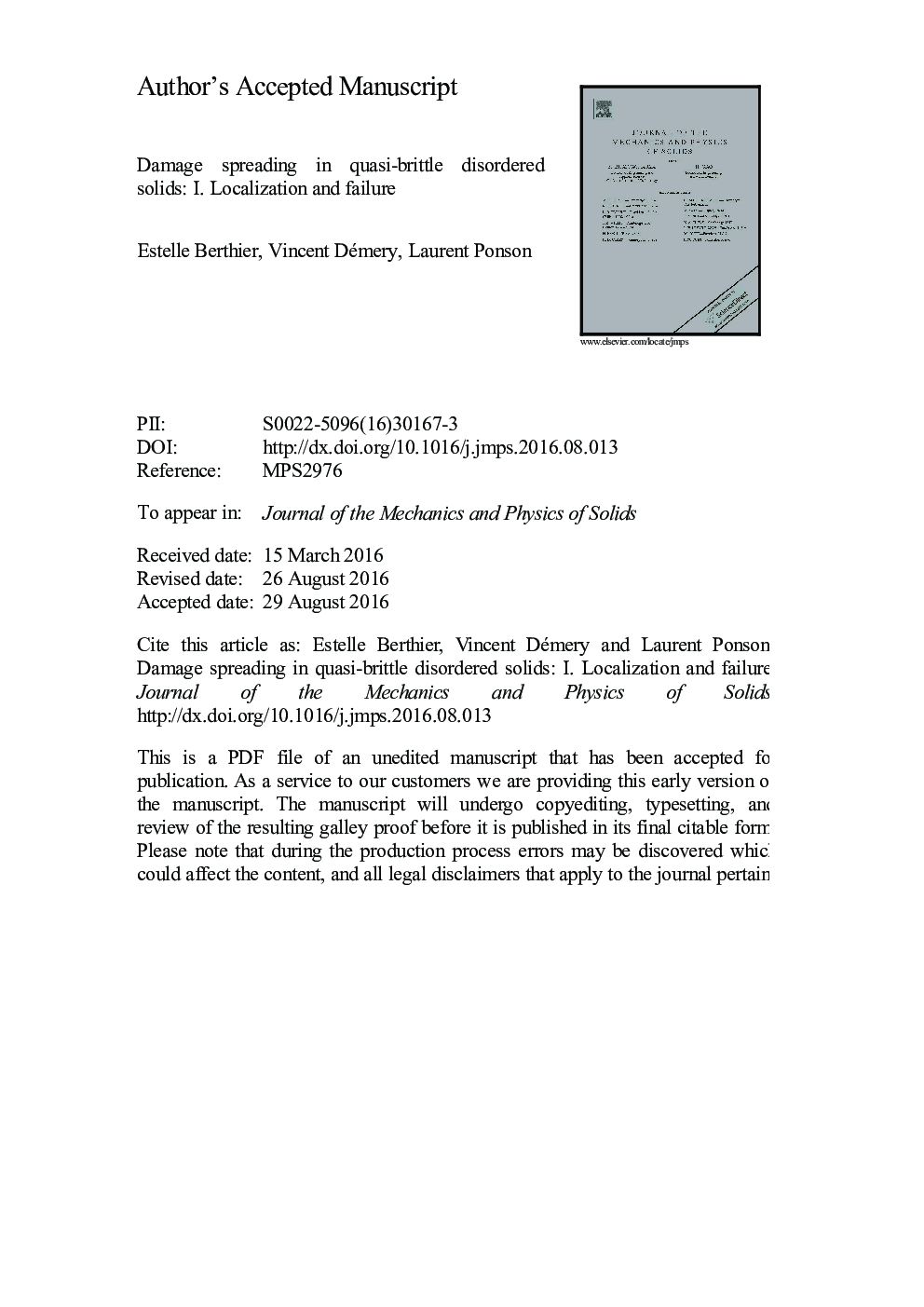| Article ID | Journal | Published Year | Pages | File Type |
|---|---|---|---|---|
| 5018134 | Journal of the Mechanics and Physics of Solids | 2017 | 48 Pages |
Abstract
We propose a novel approach inspired from non-local damage continuum mechanics to describe damage evolution in disordered quasi-brittle solids. Material heterogeneities are introduced at a mesoscopic continuous scale through spatial variations of the resistance to damage. The damage field evolution is computed from irreversible thermodynamics principles by assuming that the elastic energy released during loading is dissipated into failure. The onsets of damage localization and catastrophic failure in the material are studied as a function of the strength of the heterogeneities and the interaction function involved in the non-local formulation of the model. The predictions obtained numerically are explained theoretically for weak heterogeneities using a linear stability analysis and confirmed through a complementary approach based on a global energy minimization. Two distinct quasi-brittle failure behaviors are identified: for interaction functions that impose a reloading of the material points after the occurrence of a damage event, the damage grows rather uniformly in the material until catastrophic failure takes place. On the contrary, when damage events trigger reloading, but also a sufficiently strong unloading in some material regions, catastrophic failure is preceded by a stable regime of damage localization characterized by a length scale emerging from the structure of the load redistribution. Our study reveals the cooperative nature of the damage localization process, showing that quasi-brittle failure emerges from the interaction between the elements constituting the material. It also highlights the central role played by the mechanism of load redistribution that is shown to control the failure behavior of quasi-brittle solids.
Related Topics
Physical Sciences and Engineering
Engineering
Mechanical Engineering
Authors
Estelle Berthier, Vincent Démery, Laurent Ponson,
